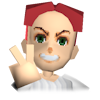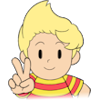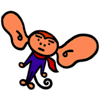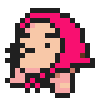MOTHER 1+2 Sound Quality
by: Kody NOKOLO on 2/14/2020
It’s no secret that most ports of games to the Nintendo Game Boy Advance have lower-quality music. Whether it be Sonic The Hedgehog: Genesis, or Earthworm Jim, almost none suffered as hard as MOTHER 2, included in MOTHER 1+2. MOTHER 2 may possibly have one of the most notorious downgrades of any Nintendo-based GBA port. Why is that, you ask? There’s several reasons that can be given on why the music was so unpleasant to many, but let’s start with the basic information.
Reason #1: The Port was Rushed
The GBA port of MOTHER 2 came packed in with MOTHER, then known as EarthBound Zero. MOTHER’s port came in with a slew of improvements, such as pixel-based movement as opposed to tile-based, like the Famicom original. Not as much development went into MOTHER 2’s port, because the main focus was likely put on improving MOTHER.
Reason #2: The Way Samples were Imported
Many of the samples were not carefully placed in, as a lot of them are drastically off, compared to their SNES originals. One of the trumpet samples was not properly looped, causing it to have a very violent sawtooth sound to it, instead of a soft trumpet sound. Some samples are flat-out completely different, such as the melody instrument in the second half of Smiles and Tears, or the iconic MD Seeger guitar sound from Gyiyg Strikes Back! Part 2. A lot of the samples that were imported were not tuned to the same musical “reference”, so making the MIDIs for the game was likely more difficult to get just right.
Reason #3: Lack of Care and Polish in the MIDIs
Almost every single track in the port has a distinct inaccuracy within the transcription. Many times, it’s an instrument being the wrong key, with examples like the percussion in Onett, or the organ in Welcome Home. Looking in the MIDIs on their own, the notes are properly placed, but out of key. Many of the pitch bends in the original game were not properly redone here, causing them to sound completely off, the best examples being tracks like most cave themes, Alien Invasion, or Belch’s battle theme. Sometimes, there will be missing patterns/sound channels, such as the backing leads in Snowman, or nearly everything in Battle Against A Weak Opponent.
Reason #4: Low Engine Sample Rate
The sound engine used in MOTHER 2’s GBA port is the same engine used for many other popular GBA games, including Pokemon Ruby, Sapphire, Emerald, Fire Emblem, The Legend of Zelda: A Link to the Past/Four Swords 2 Pak, Kirby: Nightmare in Dreamland, the Sonic Advance games, and more. This shared sound engine, usually called “M4A,” “mks4agb,” “MP2K,” or “Sappy,” provides some room for configuration so that game developers can choose how much audio quality they want to sacrifice to let the game run faster. MOTHER 1+2 sets one of these options, the “sample rate”, very low (to 10.5 KHz). This causes the sound to lose a lot of clarity (for another example of what 10.5 KHz audio sounds like, see the GBA soundtracks for Phoenix Wright: Ace Attorney 2 and 3). For comparison, the SNES’ sample rate hovers around 32 KHz, and PC audio can go up to 48 KHz (sample rates on PCs go way higher than 48kHz. In fact, DVD-Audio achieves 96kHz. The highest common sample rate I’ve seen is 192kHz). From some limited testing, we did not observe any bugs after raising M2GBA’s sample rate to 15.7 KHz.
Well, Why does MOTHER 3 Sound so Good?
Many of you have probably played MOTHER 3 before, and some of you might have heard quality rips of the soundtrack on YouTube and other websites. Have you ever asked yourself why MOTHER 3’s music and sound effects sound so good, especially compared to MOTHER 1+2? Well, turns out the answer is quite simple, but why not dig in deeper? There are two main reasons:
Higher Sample Rate
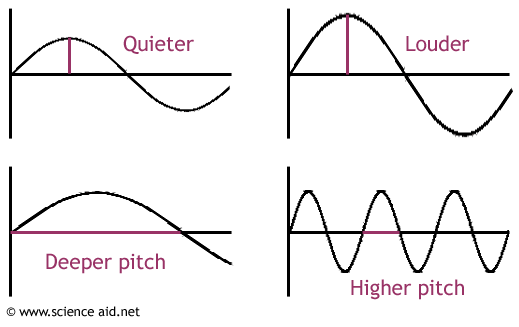
For those of you who haven’t studied digital audio before, a “sample rate” is basically how responsive an audio device is to a sound wave.
When you’re listening to music through headphones, the sounds you are hearing are being interpreted just like those stereotypical pictures or diagrams of a sound wave you may have seen: a smooth, connected curve that goes up and down.
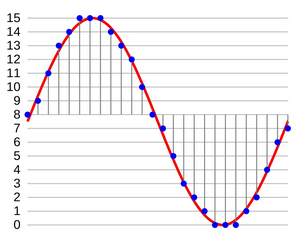
However, the math inside computers boils down to 1s and 0s, and nothing in between. How can you represent a smooth and connected curve with only two numbers? Well, you break it down into numbers (in other words, “all digits”… hence the name “digital”)!
So when we’re talking about a sample rate, it’s the number of times per second you’re “measuring” the shape of a sound wave. What was a smooth, curvy wave before now becomes a bunch of dots (the “samples” of the wave) on a graph, following the wave’s path!
Playing back a sound wave on a computer simply involves connecting those dots! There’s been a lot of math worked out over the years involving sampling, but in general: the higher the sample rate (more dots or “samples” per second), the closer the shape of the samples will be to the shape of the original audio.
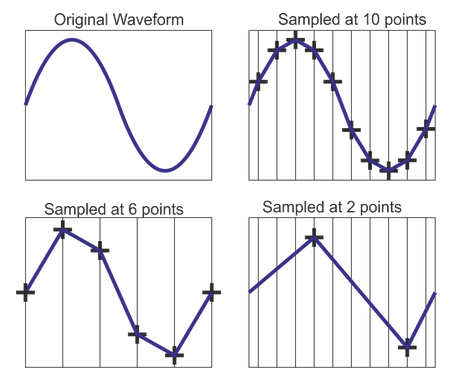
Page Contributors
Snakeshroom, PhoenixBound, Saxophone, and Sterophonick – Writers
Find any errors or want to contribute? Let us know in our Discord!





